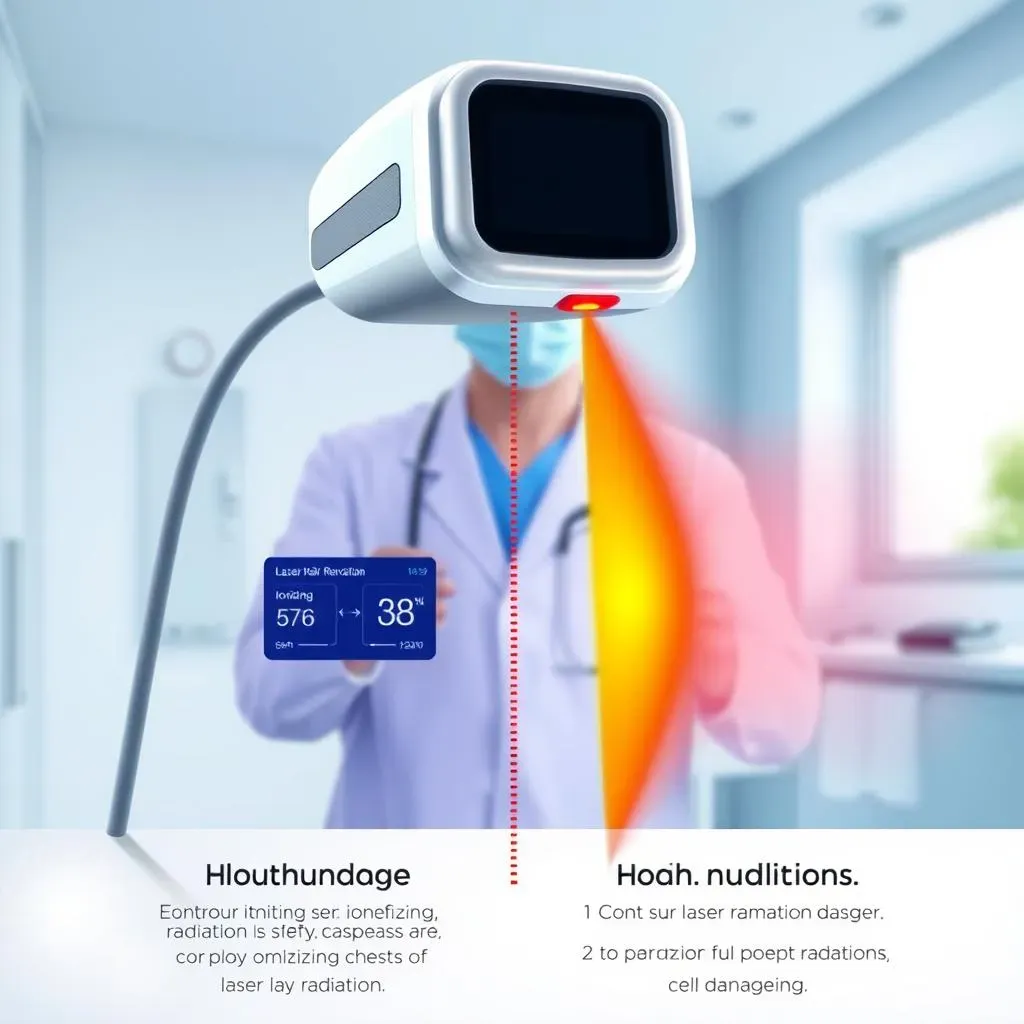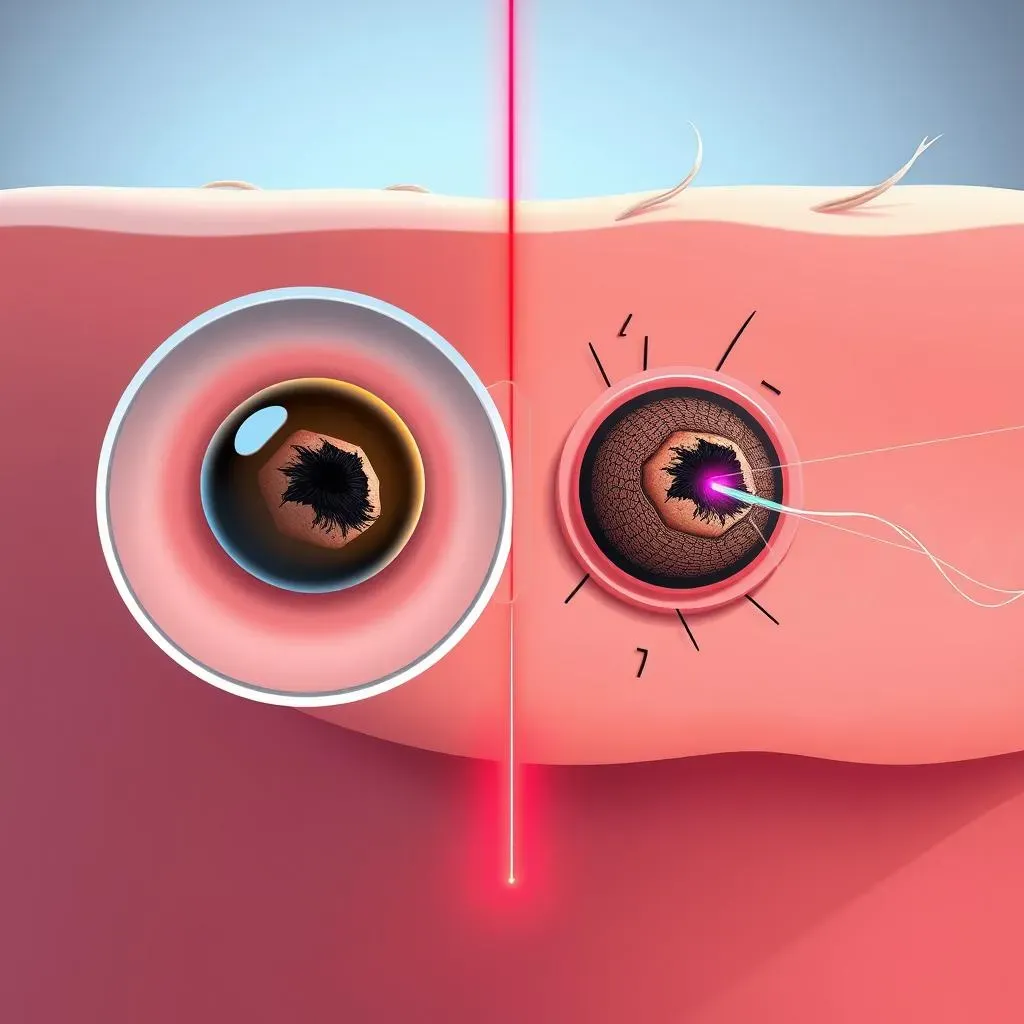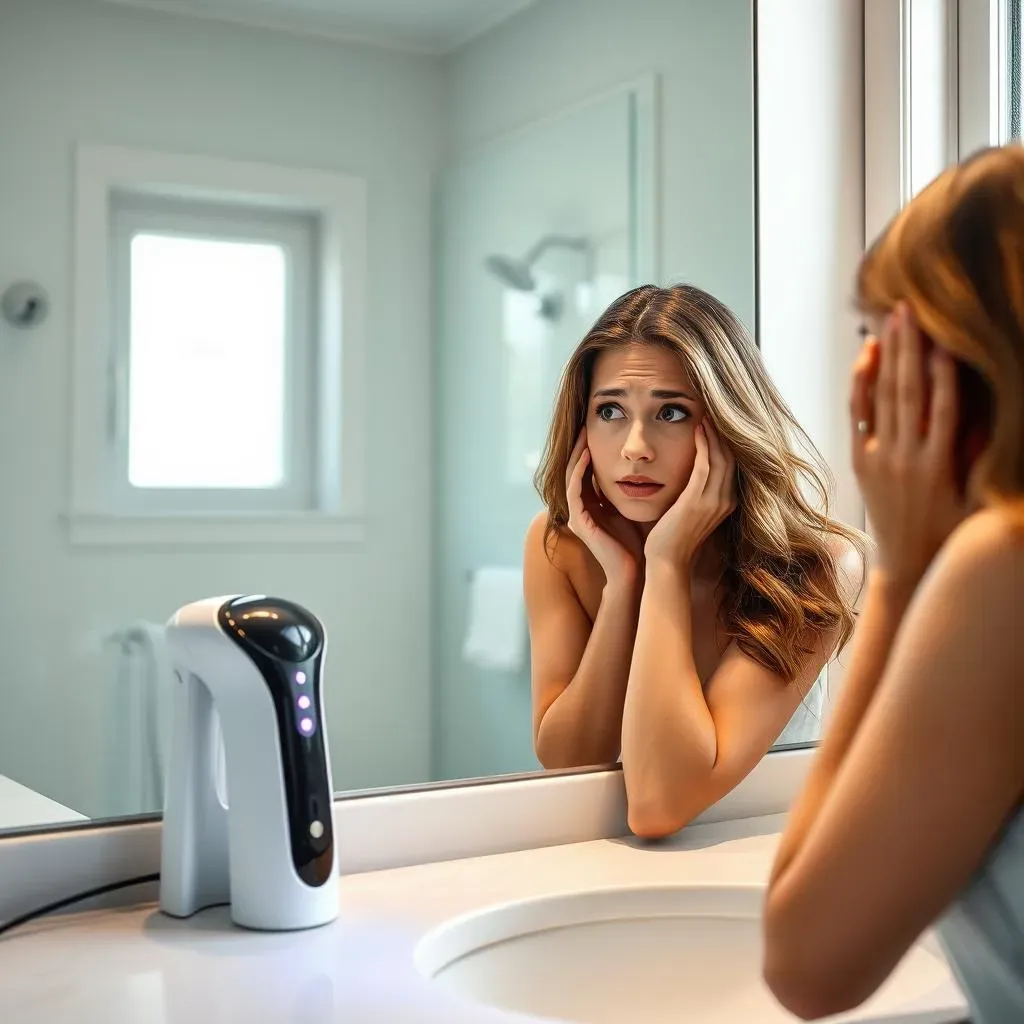Table of Contents
Thinking about zapping away unwanted hair with an at-home laser device? You're not alone. Many people are curious about the convenience of doing laser hair removal at home, but a big question often pops up: does at home laser hair removal cause cancer? It's a valid concern, fueled by the idea of lasers and radiation. This article will cut through the confusion, giving you the real facts about the type of light used in these devices and if they can really lead to cancer. We'll explain how laser hair removal works, what makes it different from the scary stuff, and what precautions you should take, especially if you have a history of skin issues. So, if you're ready to separate fact from fiction, let's get started and put your worries to rest. We’ll go through the science, safety, and who might need to be extra careful.
The Laser Hair Removal Cancer Myth: What's the Real Story?

The Laser Hair Removal Cancer Myth: What's the Real Story?
The Fear Factor: Why the Myth Persists
let's be real, the idea of lasers can sound a bit scary. We see them in sci-fi movies, and they're often associated with things like intense heat or even, you know, world-destroying beams. So, it’s no wonder that when people think about laser hair removal, especially at home, they might worry about a link to cancer. This fear is often fueled by a misunderstanding of what lasers actually are and how they work. But here’s the thing: not all light is created equal. The lasers used for hair removal are very different from the kind that cause harm.
It's like confusing a flashlight with a nuclear reactor – they both produce light, but their power and impact are worlds apart. We often associate the word "radiation" with cancer, but radiation is just energy moving through space, and there are different types of it. Some, like X-rays and gamma rays (ionizing radiation), can damage our cells. The light from laser hair removal devices, on the other hand, is non-ionizing.
Laser Light vs. "Bad" Radiation
The key difference lies in the type of radiation. The lasers in hair removal devices emit non-ionizing radiation, which means it doesn't have enough energy to damage the DNA in your cells. Think of it like this: sunlight is also a form of non-ionizing radiation, and while too much of it can cause sunburn, it doesn't directly cause cancer in the same way that, say, an X-ray might. Laser hair removal devices use a specific wavelength of light that targets the pigment in your hair follicles, and the energy is absorbed by the hair, not your skin cells. It's kind of like a heat-seeking missile, but for hair. The light is focused and precise, so it doesn’t go zipping around causing trouble elsewhere.
Type of Radiation | Energy Level | Potential for Cell Damage |
|---|---|---|
Ionizing (X-rays, Gamma Rays) | High | Can damage DNA, leading to cancer risk |
Non-Ionizing (Laser Hair Removal, Sunlight) | Low | Does not damage DNA, very low risk of cancer |
Safety in Numbers: Studies and the FDA
Numerous studies and regulatory bodies, like the FDA, have looked into the safety of laser hair removal. The consensus? When done correctly, by a trained professional or with a well-regulated at-home device, laser hair removal is considered safe. There's no evidence to suggest that the low-energy, non-ionizing light used in these devices increases your risk of cancer. It’s important to stick to reputable brands and follow the instructions carefully. This isn’t the wild west of lasers, there are regulations, so it’s not like you're using a device from a mad scientist's lab. However, if you have a personal or family history of skin cancer, you should always talk to your doctor before using any laser hair removal device, just to be extra safe. It's always better to be cautious and informed.
"The lasers used in hair removal are designed to target hair follicles and do not penetrate deep enough to affect the DNA of cells or cause cancer." - BYou Laser Clinic
Understanding the Science: How Laser Hair Removal Actually Works

Understanding the Science: How Laser Hair Removal Actually Works
The Target: Melanin in Hair Follicles
so how does this laser thing actually work? It's all about targeting something called melanin. Melanin is the pigment that gives your hair its color. The laser emits a specific wavelength of light that is absorbed by the melanin in your hair follicles. Think of it like a tiny, super-precise light beam that's attracted to the dark pigment of your hair. When the light hits the hair follicle, it converts to heat, and that heat damages the follicle, which is what stops it from growing new hair. It's not about burning the skin, but about delivering just enough energy to the hair root to disable it. That's why it works better on darker hair, since it has more melanin to absorb the light.
It’s a bit like how a black t-shirt gets hotter in the sun than a white one. The black fabric absorbs more of the sun’s energy, and that's the basic principle behind laser hair removal.
The Process: From Light to Heat
Now, let's talk about the process. The laser device emits pulses of light, and these pulses are incredibly quick, like fractions of a second. When the light is absorbed by the melanin, it turns into heat, which damages the hair follicle. This damage is what inhibits future hair growth. The surrounding skin is usually not affected much because it doesn't contain as much melanin as the hair follicles, especially if you have a lighter skin tone. This is also why you need to avoid tanning before laser treatments – if your skin is darker, it will also absorb the light, which can increase the risk of burns or discoloration. It's all a delicate balance of light, pigment, and heat.
The key here is precision. The device is designed to target only the hair follicle, leaving the surrounding skin relatively untouched. Think of it as a highly targeted and efficient hair removal system.
Step | Action | Result |
|---|---|---|
1 | Laser emits light | Light targets melanin in hair follicle |
2 | Light converts to heat | Heat damages hair follicle |
3 | Damaged follicle | Inhibits future hair growth |
Multiple Treatments: Why It Takes Time
One thing to keep in mind is that hair grows in cycles, and laser hair removal is most effective when the hair follicle is in its active growth phase. This is why you need multiple treatments. Not all of your hair follicles are in the same phase at the same time, so you’ll need multiple sessions to catch them all when they are most vulnerable to the laser. It's not a one-and-done deal, but it's a process that, over time, can lead to significantly reduced hair growth. It’s like weeding a garden, you have to keep at it to keep the weeds from coming back. Each treatment weakens the hair follicle, leading to less and less hair growth over time. Be patient and consistent. If you're thinking laser hair removal is a magical fix, it isn't, but if you stick with it, it can be pretty effective.
AtHome Laser Hair Removal: Safety and Precautions

AtHome Laser Hair Removal: Safety and Precautions
Choosing the Right Device: Not All Lasers Are Created Equal
So, you're thinking about getting an at-home laser hair removal device? Cool, but hold up a sec. Not all of these gadgets are the same. Some are more powerful than others, and some are better suited for certain skin tones and hair colors. It’s like picking a car – you wouldn't choose a monster truck for a city commute. You need to match the device to your needs. Look for devices that are FDA-cleared, which means they've been tested and found to be safe for home use. Also, check out reviews and see what other users have to say about their experiences. Don't go for the cheapest option you can find; your skin is worth investing in. It’s like buying a good pair of running shoes, you don’t want to cheap out, otherwise you might get hurt.
Also, be very careful when buying from websites that you don't know, you may end up with a fake product that not only doesn't work, but can be dangerous. Stick to well known brands to be safe.
Before You Zap: Skin Tone and Hair Color
Here's a crucial point: at-home laser hair removal works best on people with light skin and dark hair. This is because the laser targets melanin, and if your skin is dark, it will absorb more of the light, which can lead to burns or discoloration. If your hair is light, like blonde or gray, the laser might not be able to target the melanin in your hair effectively. Some newer devices are designed for a wider range of skin tones, but it’s still essential to do your homework. Check the device's manual and make sure it’s safe for your specific skin and hair type. It's like trying to use a screwdriver to hammer a nail – it just won’t work, and you might end up hurting yourself. If you're not sure, consult a dermatologist before starting treatment.
It's important to remember that laser hair removal is not a magic wand. It requires patience, consistency, and the correct device for your specific needs.
Patch Testing and Following Instructions
Before you go all-in and start zapping your whole body, do a patch test. This means testing the device on a small area of your skin to see how it reacts. This will help you avoid any major burns or irritation. It's like testing the temperature of the water before you jump into the pool, you want to make sure it’s not too hot or too cold. Also, read the instruction manual carefully, and follow the directions. Don’t assume you know how to use the device. These devices are designed to be safe when used correctly, but they can cause problems if you don’t follow the rules. It’s not a video game, and you shouldn't just start mashing buttons, be sure to follow instructions to the letter.
It's like baking a cake, you wouldn't skip the instructions, would you? The same thing applies to laser hair removal.
Potential Side Effects and What to Expect
let’s talk about side effects. Some people experience redness, swelling, or a bit of discomfort after treatment. This is usually temporary and should go away within a few hours. If you have sensitive skin, you might experience a bit more irritation. If you notice any severe burns, blisters, or discoloration, stop using the device and consult a doctor immediately. Also, avoid sun exposure after treatment. Your skin will be more sensitive to the sun, so use sunscreen and protective clothing. It’s like having a sunburn, you wouldn't go out and sunbathe, would you? Be gentle with your skin and give it time to heal. Laser hair removal is a process, and it's important to be patient and consistent with your treatments.
Safety Precaution | Why It's Important |
|---|---|
Choose FDA-Cleared Devices | Ensures safety and effectiveness |
Match Device to Skin/Hair | Reduces risk of burns and irritation |
Patch Test | Prevents widespread adverse reactions |
Follow Instructions | Ensures safe and proper usage |
Avoid Sun Exposure | Protects sensitive skin post-treatment |
The Final Word on At-Home Laser Hair Removal and Cancer
So, let's recap: the fear that at-home laser hair removal causes cancer is largely unfounded. The light used is non-ionizing, meaning it doesn't have the energy to damage your DNA like the radiation that causes cancer. While the technology is generally considered safe, especially when used as directed, it’s always smart to be cautious. If you have a personal or family history of skin cancer, or if you’re just feeling uneasy, chatting with a dermatologist is the best way to ensure you’re making the right choice for your body. Remember, being informed is your best tool for making smart decisions about your health and beauty routines. Don't let myths scare you; instead, stick to trusted sources and talk to professionals when needed.
